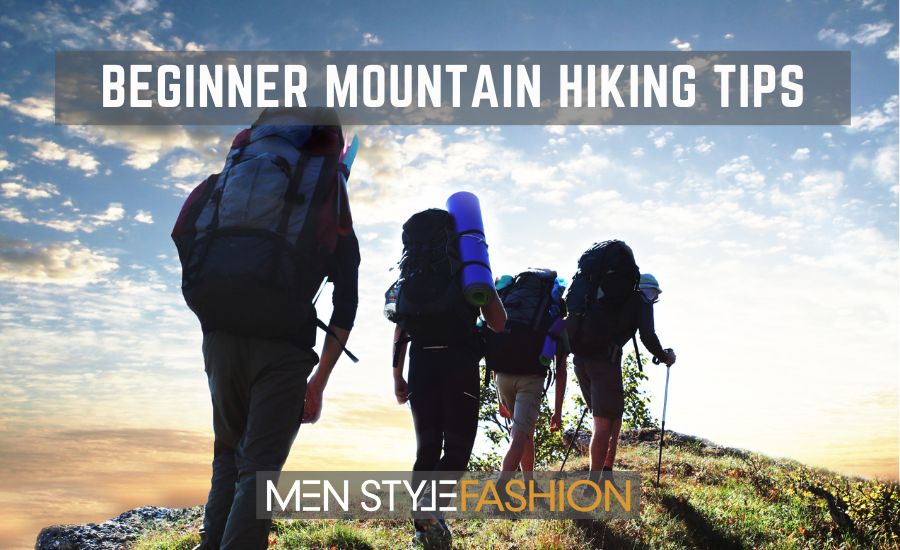It’s an exhilarating experience to plan your first mountain hike. Before you hit the trails, here are a few things you should know.
Select the Appropriate Trail
If you want some mountain hiking suggestions, you may utilize many internet tools, such as online databases and applications with route information.
It’s simple to plot your route on a map, learn about the length of a path, and get advice from other hikers. Investigate several routes in the region you wish to explore to learn more about the challenge and beauty.
The Yosemite Decimal System is an easy method to categorize mountain paths depending on their difficulty. It’s a climbing system, although classes one through three may indicate the complexity of a path.
A class one path is usually well-kept and has no severe ascent. A class three path has additional hazards, rocks, and plants that might impede your progress.
Another factor to consider is the length of the path. Determine your fitness level and how far you can walk.
Look for other adjacent paths and junctions as well. Can you take an alternative route home if you get tired?

Get to Know the Trail
To learn about big problems or exciting sites on a path, look for reviews and suggestions from other hikers. If you want to hike with your dog, read the guidelines. Animals are not permitted on specific paths.
Google Maps and Google Earth may help you picture your plan, locate the best scenic sites, and anticipate some problems.
If you’re going on a lengthy trek, it’s a good idea to hike various sections of the path before completing the whole thing. You may drive to a particular place, trek for a time, and then return. Repeat this method until you’ve examined the entire path and are comfortable trekking the full length of it.
Pick the Right Day
Choosing a day with pleasant weather is one of the best mountain hiking advice for beginners. To escape the intense afternoon sun, depart early in the day.
Hiking on a hot summer day may be unpleasant and raise your heatstroke risk. Hiking in chilly weather might be difficult if you don’t have the proper equipment.
Hikes in the spring and autumn are ideal for novices. You should cancel your trek if it rains or the weather is warmer than predicted.

Inform Someone about Your Solo Hike
One of the most vital pieces of mountain hiking advice is to notify someone where you’re going. You should inform a friend or family of your plans and provide them with a copy of your itinerary.
It’s a good idea to keep in touch with this individual. Call them halfway during the trek and again when you get home.
Trek with someone if you can, and invest in a satellite phone if you wish to trek in distant locations.
It’s essential to notify someone where you’re going so that you can seek assistance quickly if you get lost or harmed.
The Ten Essentials
The optimum packing list is determined by the weather, the location, and the length of the walk. You should bring the following items regardless:
- Water. Bring more water than you need, and consider purchasing a lightweight insulated water bottle.
- Food. Bring extra food in case the hike lasts longer than anticipated. Choose foods high in protein and carbohydrates. Nuts, seeds, dried fruits, and hard cheese are portable snacks.
- Clothes. Dress in layers and use breathable materials, like these shell jackets from Arcteryx. Bring extra layers of clothes in case the weather changes.
- Light. Bring a light and extra batteries in case you get lost and wind out in the middle of the night in the bush.
- Sun protection is essential. You’ll need lots of sunscreen, sunglasses, a hat, and dark, long-sleeved clothing.
- First-aid supplies. You should include a first-aid kit, medicines, bug repellent, and blister pad cushions.
- Fire. You may need to start a fire for warmth if you become lost. Bring matches, a lighter, or a waterproof fire-starting kit with you.
- Shelter. Pack a lightweight hiking tent or an ultralight tarp.
- Tools. You’ll need a knife, a multi-tool, and a tent repair kit for your shelter.
- Navigational aids. Instead of depending only on your phone’s GPS function, it’s a good idea to have backup navigation options. Bring a map, GPS, and a compass with you.
Wear the Right Gear
Quality equipment will keep you safe and guarantee that your trip is enjoyable.
You’ll need a little backpack. Choose the appropriate size for the length of your journey and search for supporting features such as a strong frame. Choose a backpack with a back mesh panel for breathability and outside compartments for quick access to critical goods.
When it comes to footwear, there are several alternatives to consider. On well-maintained routes, you may use lightweight trail shoes or invest in mountaineering boots for more difficult climbs. Your shoes should fit correctly, and you should break them in before the hike.
For your base layer, go for breathable, moisture-wicking gear. You should have a mid-layer of warm, insulating clothing and a third layer of warm, waterproof clothing. Bring a rain jacket in case of rain, and wear clothing that is simple to remove if you need to remove a layer.
Pack light
A day walk pack should carry at most 10% of your body weight. For a multi-day walk, you may go up to 20%.
Purchase goods such as an ultralight shelter, tent, or sleeping bag. When possible, eliminate superfluous goods and replace them with lighter alternatives.
When packing your meals, keep calories and nutrients in mind. Dried fruits and nuts, hard cheese, powdered milk, protein bars, beef jerky, and freeze-dried beans and grains provide the best nourishment while taking up the least space.
Pace Yourself
Remember that you’re hiking, not running a race. The average hiker walks at two to three miles per hour. A decent speed is twenty minutes per mile, but don’t be afraid to go slower if there are difficulties or an elevation.
Purchase a GPS watch to keep track of your pace. You should take short breaks every hour and larger breaks every two to three hours.
Your optimal speed is determined by your degree of fitness, so don’t be concerned if you require more frequent stops initially.
Do Not Leave Any Trace
After a trek, take your rubbish with you.
It is important to respect both environment and your fellow hikers on the route. Leave no trace is one of the most crucial mountain trekking recommendations.
Bring some zip-loc plastic bags for garbage disposal. To limit waste, avoid exposing bodies of water to soap or sunscreen, and consider packing your food.
If you need to use the restroom, avoid small bodies of water to minimize contamination, and carry a camp trowel to conceal your tracks. Parks and preserves may have policies and recommendations for the disposal of human waste.
Conclusion
By planning ahead of time, you can ensure that your first mountain hike is a positive experience. Prepare by researching the path and the region ahead of time, investing in quality gear and packing light, and don’t be afraid to ask other hikers for advice on the trail you wish to walk.















